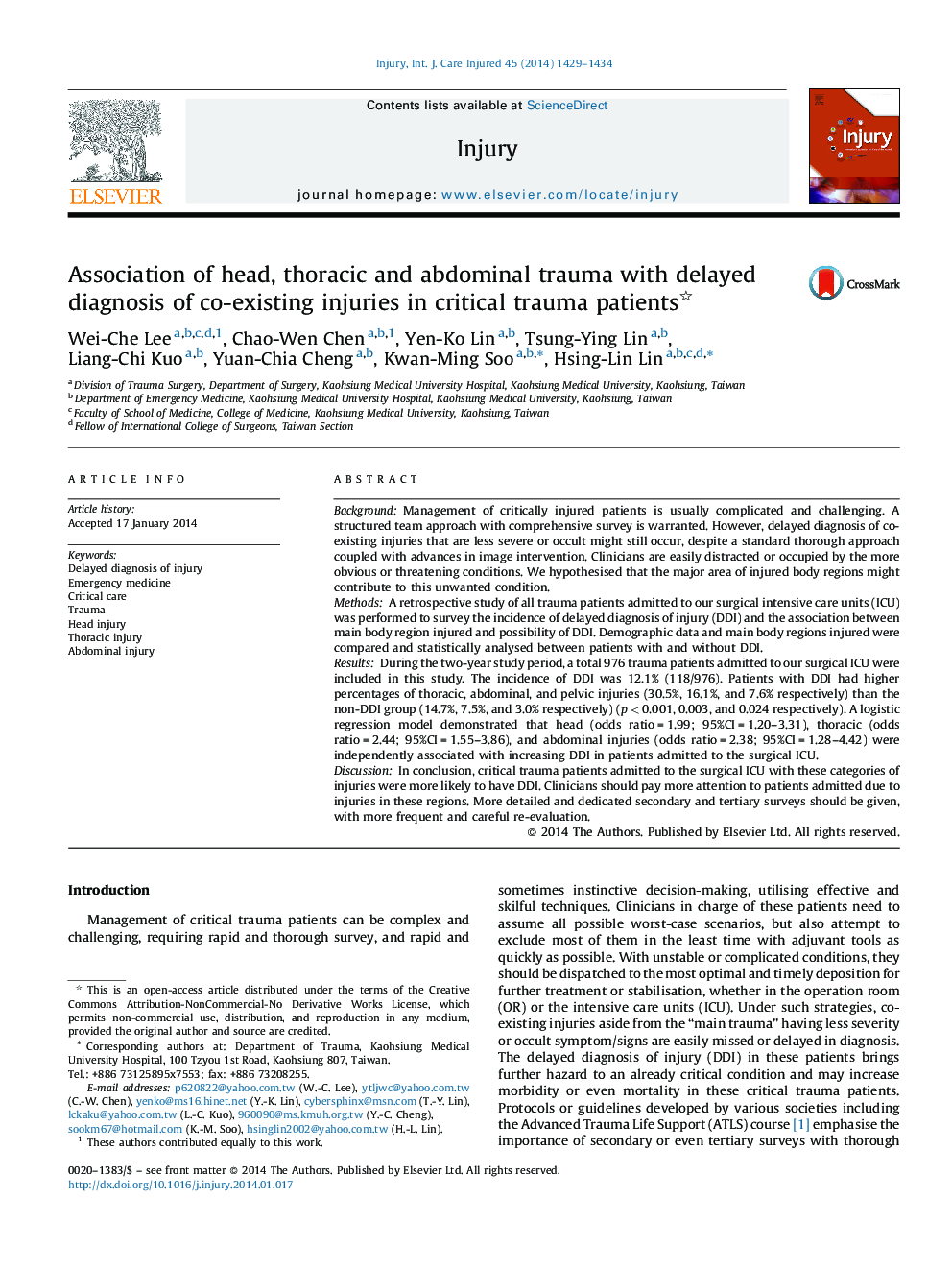| Article ID | Journal | Published Year | Pages | File Type |
|---|---|---|---|---|
| 6083596 | Injury | 2014 | 6 Pages |
BackgroundManagement of critically injured patients is usually complicated and challenging. A structured team approach with comprehensive survey is warranted. However, delayed diagnosis of co-existing injuries that are less severe or occult might still occur, despite a standard thorough approach coupled with advances in image intervention. Clinicians are easily distracted or occupied by the more obvious or threatening conditions. We hypothesised that the major area of injured body regions might contribute to this unwanted condition.MethodsA retrospective study of all trauma patients admitted to our surgical intensive care units (ICU) was performed to survey the incidence of delayed diagnosis of injury (DDI) and the association between main body region injured and possibility of DDI. Demographic data and main body regions injured were compared and statistically analysed between patients with and without DDI.ResultsDuring the two-year study period, a total 976 trauma patients admitted to our surgical ICU were included in this study. The incidence of DDI was 12.1% (118/976). Patients with DDI had higher percentages of thoracic, abdominal, and pelvic injuries (30.5%, 16.1%, and 7.6% respectively) than the non-DDI group (14.7%, 7.5%, and 3.0% respectively) (p < 0.001, 0.003, and 0.024 respectively). A logistic regression model demonstrated that head (odds ratio = 1.99; 95%CI = 1.20-3.31), thoracic (odds ratio = 2.44; 95%CI = 1.55-3.86), and abdominal injuries (odds ratio = 2.38; 95%CI = 1.28-4.42) were independently associated with increasing DDI in patients admitted to the surgical ICU.DiscussionIn conclusion, critical trauma patients admitted to the surgical ICU with these categories of injuries were more likely to have DDI. Clinicians should pay more attention to patients admitted due to injuries in these regions. More detailed and dedicated secondary and tertiary surveys should be given, with more frequent and careful re-evaluation.
